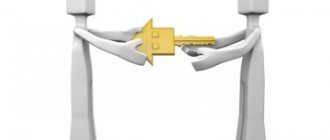We justify the need to purchase books and printed publications
To begin with, it is important to determine how books, magazines and other printed publications are related to your production activities.
For example, the following costs can be considered quite reasonable:
- for magazines (newspapers) and books on accounting and taxes, for example, the “General Ledger” magazine, since the accountant needs them for proper accounting;
- books on management, as they are needed for better personnel management;
- a collection of building standards if the company is engaged in construction;
- “Rossiyskaya Gazeta”, since it publishes laws and regulations;
- glossy magazines (for example, “Vogue”, “Cosmopolitan”, “Shape”, etc.) in a situation where your clients are forced to sit waiting for their turn (for example, in hairdressers, beauty salons);
- second-hand books on jurisprudence, if your profile is legal services;
- other literature, which is “informational” support necessary for conducting activities.
It will be very problematic to prove that you need publications for work that were purchased to create the interior of an office or to be placed in the director’s office in order to create a certain image of the company, for example:
- series of books “The Lives of Remarkable People”;
- Russian and foreign classics;
- Encyclopedia of Arts;
- beautiful art albums.
EXPLAIN TO YOUR MANAGER
It is better to purchase books and magazines that are in no way related to the company’s activities using net profit. Otherwise, during the audit, the tax authorities will most likely remove from expenses the costs of non-productive literature, and will charge additional taxes, as well as penalties and fines.
This also applies to subscriptions to non-production publications, for example to the Argumenty i Fakty newspaper.
If it is difficult to justify the need to purchase any literature, then it should be taken into account as follows.
In accounting, such literature cannot be taken into account either as fixed assets or as inventories. The most correct thing would be to attribute its cost (together with VAT) to other expenses and reflect it on account 91 “Other income and expenses”, subaccount 91-2 “Other expenses”.
When calculating income tax, the costs of purchasing such non-production literature cannot be taken into account.
It will also not be possible to accept VAT for deduction, since one of the mandatory conditions for applying the deduction is not met: the literature will not be used in activities subject to VAT.
This accounting method is the most secure. If you decide to take into account the costs of such literature when calculating your income tax and deduct VAT on it, the tax authorities are unlikely to agree with you. In particular, they always considered the costs of interior items purchased for the office to be unreasonable. You will have to prove your case in court, but the court may take your side. For example, when considering a case on the validity of the costs of maintaining aquariums, the court sided with the taxpayer, indicating that the costs were aimed at creating a favorable environment. There is also a decision in which the court recognized production costs for interior items, since they are aimed at creating a favorable impression on external visitors.
Now let's look at the procedure for accounting for literature that can be classified as production.
Features of accounting for direct and indirect costs of production and sales
Expenses for the production and sale of the results of the work of the media in accordance with the Tax Code (Article 318) are divided into two groups:
- Direct.
- Indirect.
Direct media expenses consist of:
- material costs for the purchase of necessary raw materials and materials used in production;
- labor costs;
- depreciation of equipment directly involved in the production process.
Taking into account labor costs, one should be guided by Art. 255 of the Tax Code, which contains some restrictions regarding the recognition of these costs for tax purposes. Direct expenses reduce income, but not completely. They are adjusted taking into account the balances of work in progress, finished products, located in the warehouse or shipped, but not yet sold in the tax period.
The composition of indirect costs is similar to the costs of a commercial enterprise.
Important! Media outlets that produce advertising and erotic products do not receive support from the state.
We take into account subscriptions to periodicals
Some accountants charge subscription fees as a deferred expense in accounting. But it's not right. The amount paid for the subscription is an advance and is reflected in the debit of account 60 “Settlements with suppliers and contractors”.
Having received the next issue of a magazine or newspaper, based on primary documents, we take into account its cost in account 10 “Materials” (debit account 10 - credit account 60) and immediately write it off as expenses for ordinary activities (debit account 20 (26) - credit account 10) . When subscribing to electronic publications, having received an invoice and a statement, we write off the cost of the subscription directly to expenses, bypassing the 10th invoice.
When calculating income tax, expenses for professional publications are included in other expenses related to production and sales. At the same time, for tax purposes, you can count as expenses a subscription to several printed publications on the same topic at the same time.
VAT on subscription is deductible in the following order.
STEP 1. When we receive an advance invoice from the publisher with the allocated amount of VAT, we accept it for deduction.
STEP 2. Upon receipt of an invoice for numbers already supplied (basically they are included in each number):
- we accept VAT for a specific publication number for deduction;
- At the same time, we restore the same amount of VAT accepted for deduction on the advance invoice.
For daily newspapers, as a rule, one invoice is issued, for example for a month or a quarter.
Postings in budget accounting in 2020–2021
Instruction No. 162n contains information about various business transactions and transactions with which these transactions can be processed. In addition, the legislator has developed a separate table with possible correspondence accounts, contained in Appendix No. 1 to Instruction No. 162n. If the required operation is not in the table, then it is possible to independently determine the wiring in accordance with the requirements of Order No. 162n. In 2021 - 2021, the budget chart of accounts is applied as amended by Order of the Ministry of Finance dated December 28, 2019 No. 297n.
We will consider typical budget accounting entries below using an example.
Example
The municipal government educational institution “School No. 1” in the current month carried out the following business transactions and reflected them in accounting (see Table 3).
Table 3
| Name of business transaction | Debit | Credit | Amount, rub. |
| Stationery supplies worth RUB 6,750 were purchased. | KRB 010536340 “Increase in the value of other inventories - other movable property of the institution” | KRB 030234730 “Increase in accounts payable for the acquisition of inventories” | 6 750 |
| Stationery worth RUB 1,750 was donated for use. | KRB 040120272 “Consumption of inventories” | KRB 010536440 “Reduction in the value of other inventories - other movable property of the institution” | 1 750 |
| Staff salaries were accrued for a total amount of RUB 754,000. | KRB 040120211 “Wage expenses” | KRB 030211730 “Increase in payables for wages” | 754 000 |
| Personal income tax withheld from salary | KRB 030211830 “Reducing payables on wages” | KRB 030301730 “Increase in accounts payable for personal income tax” | 98 020 |
| Salaries paid to employees' bank cards | KRB 030211830 “Reducing payables on wages” | KIF 020111610 “Retirement of funds of the institution from personal accounts in the treasury body”, as well as an entry in off-balance sheet account 18 “Retirement of funds from the accounts of the institution” | 655 980 |
| Insurance premiums calculated from salary | KRB 040120213 “Expenses for accruals for wage payments” | KRB 030302730, KRB 030306730, KRB 030307730, KRB 030308730, KRB 030310730, KRB 030311730 “Increase in accounts payable for payments to budgets” | 227 708 |
| Personal income tax and salary contributions for September have been transferred | KRB 030301830, KRB 030302830, KRB 030306830, KRB 030308830, KRB 030311830, KRB 030311830 “Reduction of accounts payable for payments to budgets” | KIF 020111610 “Retirement of funds of the institution from personal accounts in the treasury body”, as well as an entry in off-balance sheet account 18 “Retirement of funds from the accounts of the institution” | 325 728 |
| The expenses of this month are written off to the financial result at the end of the year | KBK 040130000 “Financial result of previous reporting periods” | KRB 040120200 "Expenses of an economic entity" | 983 458 (1 750 + 754 000 +227 708) |
Examples of postings can also be found on our website in the articles:
- “Budget accounting of fixed assets in 2021 - 2021 (nuances)”;
- “Accounting for materials in budgetary institutions (nuances)”.
We reflect business literature in accounting
Although the book has been in use for more than a year, its cost is unlikely to exceed 20,000 rubles. (or another lower limit on the cost of fixed assets established by your accounting policy). Therefore, in accounting, we take business literature into account as part of the inventory on account 10 “Materials” and write it off as expenses for ordinary activities when transferred to the department that will use it (to accounts 20, 26, 44, etc.).
For income tax purposes, business literature, regardless of cost, is not subject to depreciation. The costs of its acquisition are included in other expenses in full at the time of acquisition.
VAT on books can be deducted if:
- literature has been received and registered;
- literature is used for activities subject to VAT;
- there is a correctly executed invoice.
Off-balance sheet accounting
According to clause 66 of Instruction No. 157n, software received for use by an institution (licensee) is accounted for in off-balance sheet account 01 “Property received for use.” The cost of the software is determined based on the remuneration established in the contract.
Similar explanations are given in Letters of the Ministry of Finance of the Russian Federation dated October 2, 2013 No. 02-06-10/40915, dated August 29, 2013 No. 02-06-10/35603.
In conclusion, it should be noted that failure to reflect software products (protection keys) on off-balance sheet account 01 will lead to distortion of the indicators of the accounting (budget) reporting forms. This may serve as a basis for holding the institution accountable, because is an administrative offense in the field of finance (Article 15.11, Article 15.15.6 of the Code of Administrative Offenses of the Russian Federation).
More on the topic: How to reflect inventory results in an institution’s records?
Features of taxation of royalties paid to heirs
The media has the right to pay royalties to close relatives or heirs of the deceased author. If a tax resident of the Russian Federation has such a right, the amount of remuneration is subject to personal income tax in the amount of 13%. The heir cannot claim to be granted a professional tax deduction, since he did not incur the costs of creating the work.
When the heir is a non-resident, royalties are subject to 30% personal income tax. No tax deductions are provided for NK. Social payments are accrued when royalties are paid to the author for work created as part of creative activity. It is logical that the remuneration received by the heirs should not be subject to social contributions.
Features of online sales accounting
Media operating in electronic mode reflect sales income:
- in accounting - according to sales;
- in tax accounting - when the money supply appears in the account.
Required entries:
| Debit | Credit | A comment |
| 45 | 43 | Logs transferred for sale |
| 62 | 90.1 | Reflection of sales proceeds |
| 90.2 | 45 | Cost of products (sold) written off |
| 76 | 62 | The commission agent's debt is taken into account |
| 44 | 76 | Accrual of commissions |
| 51 | 76 | The money was received by the commission agent |
Entries are made on the day of the relevant operation.








